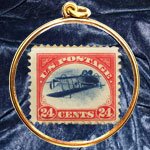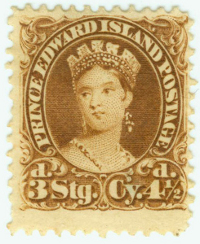
Discussion - Member to Member Sales - Research Center

Discussion - Member to Member Sales - Research Center


Login to Like
this post
I have one and I guess I have to say the results are mixed. Just like watermark fluid there are many stamps where it works well, but yellow and some of the thinner paper Washington Franklins are difficult.
How convenient it is depends as much on the user as the machine itself. Some days it seemed easier and faster (no drying time), some days nothing clicked and I pulled the old glass tray and lighter fluid out.

1 Member
likes this post.
Login to Like.
Thank You. I have a lot of Great Britain King George and Queen Elizabeth and other old stamps. I think i will try one.

Login to Like
this post

11:13:56pm
" ... Some days it seemed easier and faster (no drying time), some days nothing clicked ..."
For a while, I used the Morley-Bright Watermark Detector with mixed success.

But other than the ability to copy the watermark onto the plastic and scan it easily, I found it too time consuming and occasionally a tad messy.
So I went back to using Rubbing Alcohol an got the results I wanted.

Login to Like
this post
I have one of these detector and found it almost useless. Just went back to lighter
fluid. The drying time is not all that long for me.

Login to Like
this post
Mostly failed for me. Anyone who has seen the price of "Watermark Fluid" as of late has migrated to lighter fluid! But please be careful, as it is highly flamable! Also, do we know it is an APS approved method with no long term impact on the stamps?
I remember someone on Stampwant describing the use of enlarged scanners and copiers pictures to look at watermarks. Does anyone here remember the method? Was he/she shining the light through, and if so, how? (I think it was in relation to Argentinian definitive stamps). rrr...
Actually I found the answer...copied here, fyi:
"rubiera
601 posts
June 3, 2008 4:35 PM EDT
I use the Hewlett Packard 4890
http://www.amazon.com/Scanjet-Photo-Sca ... r-mr-title
For stamps that bend slightly, especially old mint stamps on thin paper, I overlay a transparent thick cover holder because the back scanner has a 1/8 inch gap between the stamp and the scan plate.
any additional questions, please let me know.
tony"
Anyone still in touch with Tony?

Login to Like
this post
Tony did a fantastic study on the Argentinian pictoral definitives on the old StampWants. It was very professionally done. After he finished it, he disappeared. I don't know if that's still available. If it is lost, that would be terrible for the hobby.
I tried to get him to try to get it published, but he didn't want to do it. He just wanted to put it out there for everyone to have it. It would be great if we could get it transferred to an article here, but I think there could be issues with copyright.

Login to Like
this post
Hi all;
@ rrraphy;
I too have used Ronsonal lighter fluid for detecting watermarks. Altho it doesn't seem to affect
photogravure inks. It does affect the inks used to cancel stamps. I did a number of QEII wildings
and on the 1sh brown and maybe other high values, the inks used to cancel blurred badly and
I ended up destroying them and switching to expensive watermark fluid.
My guess is these higher values were used on parcels, and maybe the Royal Mail department
handling parcels used a slightly different ink. It doesn't seem to happen to pre-QEII stamps
nor to the machins. 
Just thinkin'....
TuskenRaider

1 Member
likes this post.
Login to Like.

I was wondering if anyone used SIGNOSCOPE WATERMARK DETECTOR T1 or other electric watermark detector and do they work?

Login to Like
this post

re: Electric Watermark Detector
I have one and I guess I have to say the results are mixed. Just like watermark fluid there are many stamps where it works well, but yellow and some of the thinner paper Washington Franklins are difficult.
How convenient it is depends as much on the user as the machine itself. Some days it seemed easier and faster (no drying time), some days nothing clicked and I pulled the old glass tray and lighter fluid out.

1 Member
likes this post.
Login to Like.

re: Electric Watermark Detector
Thank You. I have a lot of Great Britain King George and Queen Elizabeth and other old stamps. I think i will try one.

Login to Like
this post
Silence in the face of adversity is the father of complicity and collusion, the first cousins of conspiracy..
21 Nov 2015
11:13:56pm
re: Electric Watermark Detector
" ... Some days it seemed easier and faster (no drying time), some days nothing clicked ..."
For a while, I used the Morley-Bright Watermark Detector with mixed success.

But other than the ability to copy the watermark onto the plastic and scan it easily, I found it too time consuming and occasionally a tad messy.
So I went back to using Rubbing Alcohol an got the results I wanted.

Login to Like
this post

re: Electric Watermark Detector
I have one of these detector and found it almost useless. Just went back to lighter
fluid. The drying time is not all that long for me.

Login to Like
this post
Retired Ap. Book Mod, Pres Golden Gate Stamp Club, Hi Tech Consultant
22 Nov 2015
02:24:30pm
re: Electric Watermark Detector
Mostly failed for me. Anyone who has seen the price of "Watermark Fluid" as of late has migrated to lighter fluid! But please be careful, as it is highly flamable! Also, do we know it is an APS approved method with no long term impact on the stamps?
I remember someone on Stampwant describing the use of enlarged scanners and copiers pictures to look at watermarks. Does anyone here remember the method? Was he/she shining the light through, and if so, how? (I think it was in relation to Argentinian definitive stamps). rrr...
Actually I found the answer...copied here, fyi:
"rubiera
601 posts
June 3, 2008 4:35 PM EDT
I use the Hewlett Packard 4890
http://www.amazon.com/Scanjet-Photo-Sca ... r-mr-title
For stamps that bend slightly, especially old mint stamps on thin paper, I overlay a transparent thick cover holder because the back scanner has a 1/8 inch gap between the stamp and the scan plate.
any additional questions, please let me know.
tony"
Anyone still in touch with Tony?

Login to Like
this post

re: Electric Watermark Detector
Tony did a fantastic study on the Argentinian pictoral definitives on the old StampWants. It was very professionally done. After he finished it, he disappeared. I don't know if that's still available. If it is lost, that would be terrible for the hobby.
I tried to get him to try to get it published, but he didn't want to do it. He just wanted to put it out there for everyone to have it. It would be great if we could get it transferred to an article here, but I think there could be issues with copyright.

Login to Like
this post

re: Electric Watermark Detector
Hi all;
@ rrraphy;
I too have used Ronsonal lighter fluid for detecting watermarks. Altho it doesn't seem to affect
photogravure inks. It does affect the inks used to cancel stamps. I did a number of QEII wildings
and on the 1sh brown and maybe other high values, the inks used to cancel blurred badly and
I ended up destroying them and switching to expensive watermark fluid.
My guess is these higher values were used on parcels, and maybe the Royal Mail department
handling parcels used a slightly different ink. It doesn't seem to happen to pre-QEII stamps
nor to the machins. 
Just thinkin'....
TuskenRaider

1 Member
likes this post.
Login to Like.


